





Psychoorganic syndrome
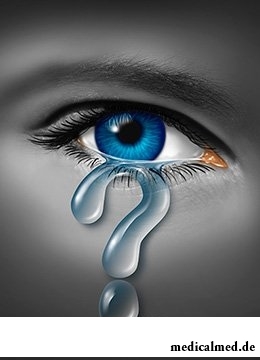 The psychoorganic syndrome is a symbol of the pathologies leading to organic lesion of a brain which is characterized by a combination of three main symptoms: decrease in intelligence, memory impairment and emotional lability (triad Walter-Bueel). Depending on what site of a brain is damaged, other mental disorders – visual and auditory hallucinations, Korsakov's syndrome, and also neurologic disturbances also can join a triad, up to stupefaction and a coma.
The psychoorganic syndrome is a symbol of the pathologies leading to organic lesion of a brain which is characterized by a combination of three main symptoms: decrease in intelligence, memory impairment and emotional lability (triad Walter-Bueel). Depending on what site of a brain is damaged, other mental disorders – visual and auditory hallucinations, Korsakov's syndrome, and also neurologic disturbances also can join a triad, up to stupefaction and a coma.
Reasons of a psychoorganic syndrome
The following pathological processes act as the reasons of a psychoorganic syndrome:
- Vascular diseases of a brain;
- Damages of the central nervous system;
- Craniocereberal injuries;
- Chronic disbolism;
- Anoxemia;
- Intoxications;
- Infections;
- Tumors and abscesses.
Mental weakness is possible also at syphilis, encephalitis and epilepsy. Not less often it arises because of atrophic processes in old age, for example, at Alzheimer's disease.
Classification and symptoms
Distinguish 4 stages of development of a psychoorganic syndrome:
- Asthenic;
- Explosive;
- Euphoric;
- Apathetic.
The asthenic syndrome is characterized by the following signs:
- Physical and mental exhaustion;
- Irritability;
- Hyperesthesia;
- Incontience of affects;
- Insignificant decrease in intelligence;
- Easy dismnestichesky frustration.
Sharp changes of climatic conditions cause an aggravation of symptoms in patients. The intolerance of a heat is noted.
In an explosive stage the clinical picture of a psychoorganic syndrome includes:
- Combination of emotional lability and aggression to small disturbances of memory and deterioration in adaptation;
- Self-checking loss, strengthening of inclinations and weakening of strong-willed delays;
- Alcoholism, which develops as a result of attempts to remove alcohol the internal stress and irritability that only worsens the general state and increases organic insufficiency;
- Tendency to the supervaluable ideas and paranoia;
- Hysterical forms of reactions to failure to meet requirements or an obstacle in implementation of plans.
At euphoric, or morioidny, option of a psychoorganic syndrome working capacity is strongly limited. This state is followed by improvement of mood with euphoria and complacency, considerable decrease in criticism of the state, serious dysmnesias. A distinguishing character is violent laughter or crying which reason is quickly forgotten, and mimic reaction can remain long time already without emotional contents. Some patients have anger attacks which are replaced by helplessness and tearfulness.
At an apathetic form the apatoabulichesky state develops. The focus of interest sharply is narrowed, appears indifference to itself and people around. Symptoms remind schizophrenia or an epileptic disease from which the psychoorganic syndrome differs in dismnestichesky frustration, an adynamy and violent crying and laughter. Signs of organic injury of the central nervous system are strongly expressed.
Psychoorganic syndrome at children
A number of age features has a psychoorganic syndrome at children. The organic lesions of a brain which are their cornerstone arise at intensive evolutive development of systems and functions of a brain at this or that degree of morpho-physiological immaturity of the central nervous system.
Up to 4-5 years decrease in intelligence is expressed in an insignificant delay of speech development and a poor lexicon. Verbal tasks are performed worse than nonverbal. Interest in stories and fairy tales is not shown, songs and verses are badly remembered. Neuropathic disturbances remind symptoms of inborn children's nervousness and include:
- Hyperexcitability;
- Dispepsichesky frustration;
- Vomiting and vomiting;
- Allergy;
- Wrong alternation of wakefulness and dream;
- Small appetite;
- High sensitivity to external influences;
- Impressionability;
- Unstable mood;
- General motive disinhibition;
- Fussiness;
- Perception disturbances;
- Diskoordination.
From 4-5 years the psychoorganic syndrome at children is characterized by preferential emotional and strong-willed and motive frustration:
- The increased affective excitability;
- Irritability;
- Impulsiveness;
- Insufficient feeling of a distance;
- Importunity;
- Frequent change of mood;
- Motive disinhibition;
- Weak attention;
- Delay in motility development.
Vegetative disturbances at the same time pale into insignificance.
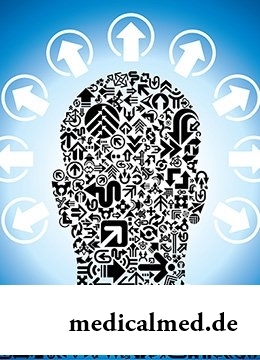 At school students and teenagers the psychoorganic syndrome is shown more variously, and intellectual dysfunction, impulsiveness and a lack of self-criticism are expressed stronger.
At school students and teenagers the psychoorganic syndrome is shown more variously, and intellectual dysfunction, impulsiveness and a lack of self-criticism are expressed stronger.
Treatment of a psychoorganic syndrome
Assessment of severity of a psychoorganic syndrome, both at adults, and at children, is carried out by test for meteopatichesky reaction. The so-called syndrome of Pirogov is that the condition of the patient changes at increase or decrease in barometric pressure. More serious condition is diagnosed when the person feels worse before fluctuations of pressure, but not after them.
Treatment of a psychoorganic syndrome has to be directed to elimination of its prime cause. At the confirmed organic diseases of a brain apply antibiotics, antiviral and hormonal drugs. As pathogenetic therapy carry out a detoxication and dehydration, and also appoint drugs which normalize a hemodynamics and metabolism of a brain. Symptoms treat anticonvulsant, resorptional and vascular means. Achieve a positive effect also psychotropic drugs and an immunotherapy.
In operating time our brain spends the amount of energy equal to the 10 Watts bulb. So the image of a bulb over the head at the time of emergence of an interesting thought is not so far from the truth.
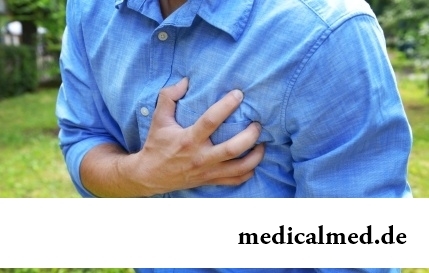
For the time being the perspective of heart diseases seems to most of people remote and foggy. But sooner or later практичес...
Section: Articles about health
One of the major chemical processes happening in a human body are oxidation reactions. They go with participation of fats and carbohydrates which we receive from food, and the oxygen getting to us from air. A main goal of such reactions is it is received...
Section: Articles about health
The nature does not stand stagnation and monotony. It is known that tissues of a human body atrophy if do not receive necessary loadings. It fully belongs also to a cerebral cortex: when it is not given full-time job, it begins to function worse. As a result memory decreases, the person becomes less bright, acquires information more slowly, hardly switches from one thought to another. There are problems at work, difficulties with communication and career development. These it is unpleasant...
Section: Articles about health
Hemorrhoids – extremely widespread disease. Periodically arising inflammations and bleeding of hemorrhoidal nodes пр...
Section: Articles about health
The depression not without reason is considered one their main troubles of our century: for scientific and technical progress, acceleration of rate of life and a surplus of information of people it is forced to pay with stresses, negative emotions and weakening of protective forces of an organism. As a result ш...
Section: Articles about health
More than a half of the married couples which faced prostatitis – leave. The new broadcast "Female View of Prostatitis" will help to learn – whether you have or your relatives problems....
Section: Articles about health
Tuberculosis – a serious infectious disease which development is caused by mycobacteria (Koch's bacilli). The illness is known from a deep d...
Section: Articles about health
All the known slogan "Protect Men!" arose not from scratch. In a sense, the nature created men much less adapted for vital disorders, than it seems at first sight. Statistically, men are ill more often...
Section: Articles about health
Within several decades of our compatriots convinced that the use of butter nasty affects a condition of coronary vessels. As a result the reputation of a product was impaired thoroughly a little, and many almost ceased to include it in the diet, having given preference "to safer" to vegetable fats. Meanwhile, the last researches showed that harm of butter for health is strongly exaggerated. But the product has a number of unique properties, to...
Section: Articles about health
Healthy lifestyle today in fashion, and many parents think of that the child from the early childhood played sports. To a Torah...
Section: Articles about health
Impossibility to conceive the child – a trouble of many Russian families. During quite long time was considered that main "culprits" of troubles such are women. Modern physicians claim that the situation is different: about a half of failures at...
Section: Articles about health
The popular expression "run from a heart attack" became the motto of the people supporting active lifestyle. Moreover, run became a peculiar fashionable tendency: sales of racetracks and the accompanying goods for run are at permanently high level. Whether really it is possible for one and all people and it is necessary to run to receive the portion of health, a charge of cheerfulness and good mood?...
Section: Articles about health
Feeding by a breast - the integral part of ideal motherhood allowing to come into contact with the kid and to create since early years...
Section: Articles about health
Herpes simplex of the first type (the infectious disease which is shown periodic bubble rashes on lips is called) – one of the most widespread illnesses. Statistically, only 5% of inhabitants of our planet are unreceptive to its activator, and...
Section: Articles about health
Memory is an ability of the central nervous system to fix, keep and as necessary to reproduce information on knowledge or skills received by the person or an animal during life. The mechanism of this process is up to the end not studied....
Section: Articles about health
Tick-borne encephalitis – one of the most dangerous viral diseases which causative agents transfer and is given to people by ixodic mites. Эт...
Section: Articles about health
Statistically cystitis 25-30% of women up to 40 years have. With age this indicator raises, besides many do not get to statistics because do not see a doctor. The most sad that after the regular visits to doctors, long reception of antibiotics...
Section: Articles about health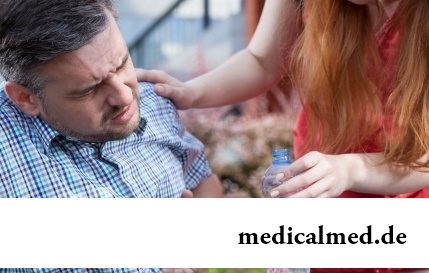
Each of us faces from time to time that other people need the immediate help. We react to it differently: one at once call doctors and police, others rush to victims and try to save them independently. Some pass by at all … Certainly, desire to help the neighbor who got into trouble, quite naturally for any decent person. However not everyone understands that to work in a similar situation, being guided by exclusively good...
Section: Articles about health
Not without reason doctors say that 90% of diseases begin or develop because of misoperation of intestines. Disturbance of its functions связ...
Section: Articles about health
We live during an advertizing era. Daily each person receives a solid portion of persuasive councils about what to eat to be healthy and successful. Products about which we will talk today are combined by the following circumstance: all of them are positioned as most...
Section: Articles about health
The kid who was recently born is surrounded with love of adult family members and their cares without which the baby cannot exist. Some parents consider that gentle attachment and caress are quite enough that the child correctly developed and was happy, but it not so. It is important to know as much as possible about specifics of care of the baby, the reasons of his behavior and possible problems. Only the "able to see" love will provide to the little man that it is necessary for him....
Section: Articles about health
Quite large number of people adheres to the principles of vegetarian food. But how to be if in a family of vegetarians is д...
Section: Articles about health
At this plant there are a lot of names: tuberiferous sunflower, Jerusalem artichoke, solar root, earth pear. Contrary to popular belief, it is not an exotic plant at all. The wild girasol grows in a midland of Russia practically everywhere: at the edges of roads...
Section: Articles about health
The majority of gynecologic diseases prove three main signs, each of which speaks about need of a visit to the gynecologist. Certainly, it is possible to establish the exact diagnosis only after inspection, but on the basis of some signs it is possible to assume existence of this or that pathology. Let's consider symptoms of the female diseases which are found most often....
Section: Articles about health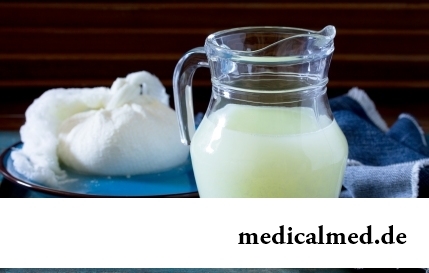
Milk and products of its processing by right occupy one of the main places in a diet of the modern person. They contain necessary...
Section: Articles about health
Partial and the more so full loss of hearing significantly reduces quality of life. Difficulties with communication lead to loneliness and isolation. The person who badly hears experiences difficulties with social and professional implementation, quite often has problems in...
Section: Articles about health
Very often as a source of the infection which caused a disease serves our house - the place which a priori has to be safe. However disease-producing bacteria can perfectly feel not only in insanitary conditions, but also in our apartment if not to carry out due care of favourite places of their dwelling. What they − sources of their reproduction? Let's consider 10 most widespread places in our house, the most dangerous from the point of view of infection with microorganisms....
Section: Articles about health
